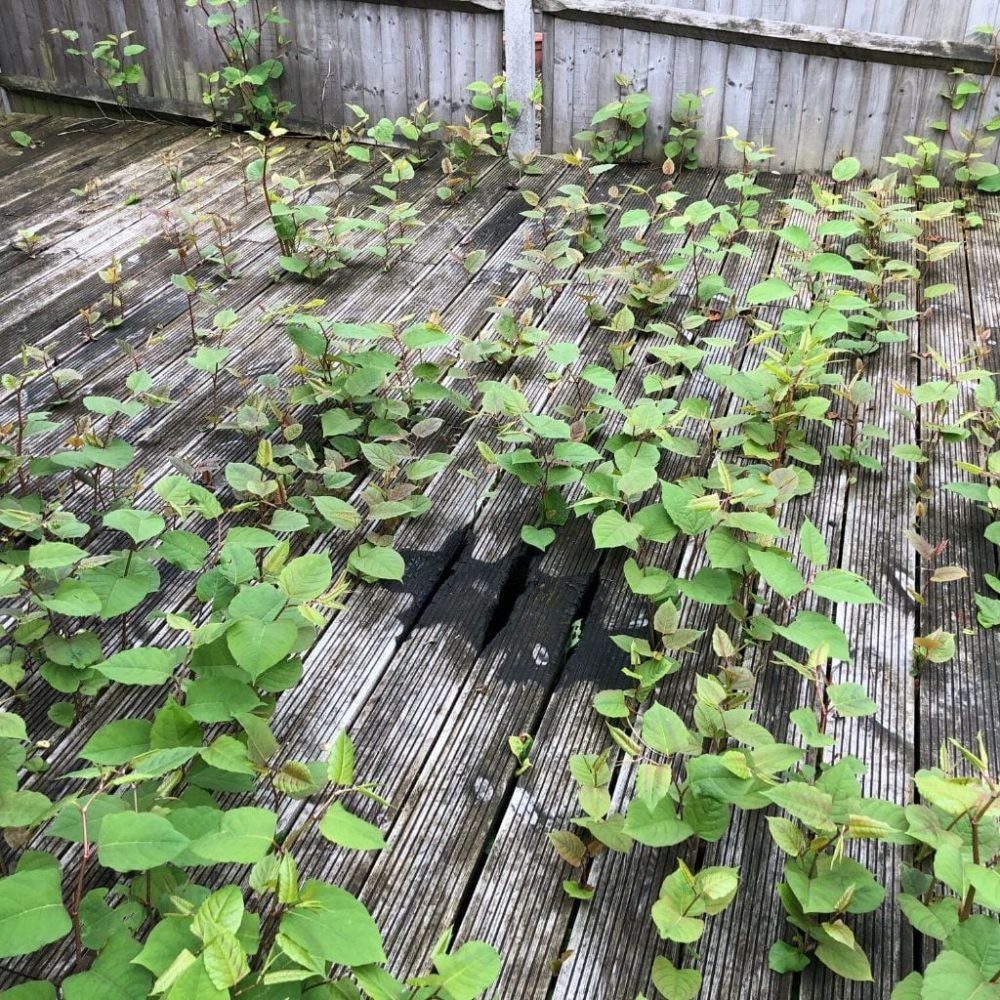
Japanese knotweed is an invasive species that can be incredibly difficult to remove. It has a fast-growing root system that can spread underground for metres, making it very difficult to eradicate. As a result, many people attempt to remove Japanese knotweed themselves, only to make matters worse.
Common Mistakes With DIY Japanese Knotweed Removal
Cutting the Plant
This is one of the most common mistakes people make. When you cut Japanese knotweed, you may kill the above-ground growth, but the roots will remain alive and eventually send up new shoots. In fact, cutting Japanese knotweed can worsen the problem, as it can stimulate the growth of new rhizomes.
Mowing the Plant
Mowing Japanese knotweed is just as ineffective as cutting it. The same principle applies: mowing will kill the above-ground growth, but the roots will remain alive and will eventually send up new shoots. Also, mowing can spread the plant’s rhizomes, worsening the problem.
Digging Up the Plant
This is another common mistake people make during Japanese knotweed removal. Japanese knotweed has a pervasive root system, and it isn’t easy to dig up all the roots. Even if you dig up most of the roots, there is always a chance that some will be left behind, which can lead to the re-growing plant.
Using the Wrong Herbicide
There are several herbicides that can be used to kill Japanese knotweed, but not all herbicides are created equal. Some herbicides are more effective than others, and some are more likely to damage surrounding plants. It is essential to choose a herbicide designed explicitly for Japanese knotweed and follow the label instructions carefully.
Wrong Application of Herbicide
Even if you use a suitable herbicide, it is essential to apply it correctly in order to be effective. The herbicide must be applied to the leaves of the plant when they are actively growing. Applying the herbicide to all the leaves, including those hidden from view, is also important.
Inconsistent Treatment
Japanese knotweed is a very resilient plant, and it may take multiple treatments with herbicides to kill it completely. It is important to treat the plant repeatedly, even after it appears to be dead.
If you are trying your hand at Japanese knotweed removal on your property, it is important to be aware of the mistakes that you might make. By avoiding these mistakes, you can increase your chances of success. However, it is important to remember that Japanese knotweed is a very difficult plant to remove, and even if you do everything correctly, it may take several years to eradicate it completely. If you need more confidence in your ability to remove Japanese knotweed yourself, it is best to hire a professional.
Other Things to Consider with Japanese Knotweed Removal
In addition to the mistakes listed above, there are a few other things to keep in mind when trying to remove Japanese knotweed yourself. First, it is important to wear protective clothing when working with Japanese knotweed. The plant contains sap that can irritate the skin and eyes. Second, it is important to dispose of Japanese knotweed properly. Do not compost it or put it in your regular garbage. Instead, please take it to a hazardous waste disposal facility.
At CYB Environmental, we offer Japanese knotweed removal services in London, Cardiff, and Bristol. We use a variety of methods to remove knotweed, including excavation, herbicide treatment, and thermal remediation. Plus, we also offer a 5-year warranty on our work. We will, therefore, be happy to help deal with the Japanese Knotweed infestation on your property, with little to no chance of its regrowth. Contact us to learn more about how we can help you.

